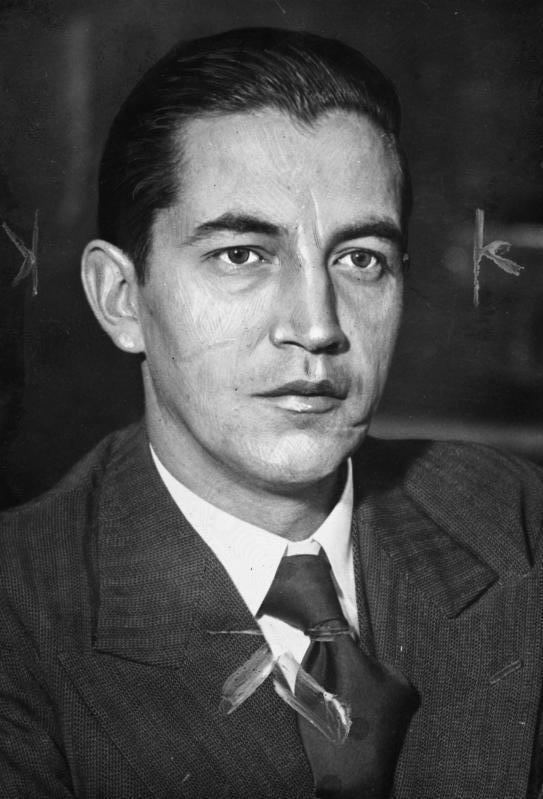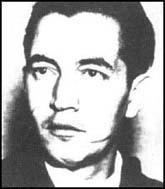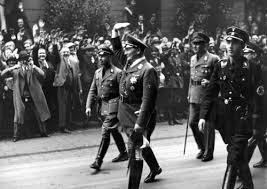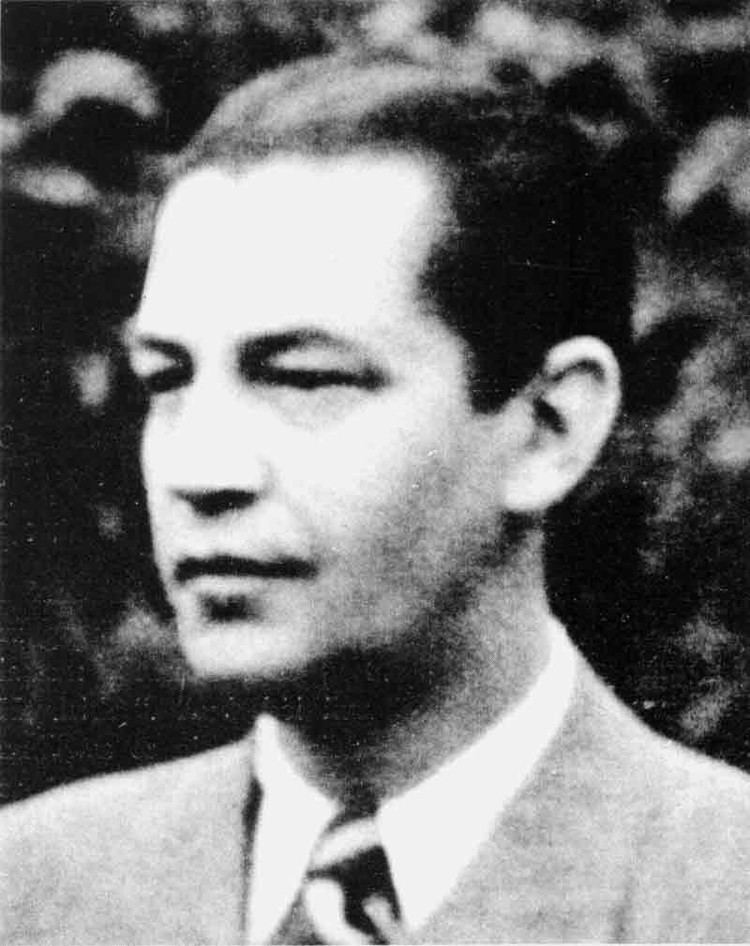Appointed by Hermann Goring Name Rudolf Diels Children Corinna Genest Party Nazi Party | Preceded by none Spouse Gudrun Genest (m. ?–1936) | |
 | ||
President Paul von HindenburgAdolf Hitler (Fuhrer) Political party National Socialist German Workers' Party (NSDAP) Similar People Adolf Hitler, Hermann Goring, Erwin von Lahousen, Baldur von Schirach, Heinrich Hoffmann | ||
Rudolf Diels (16 December 1900 – 18 November 1957) was a German civil servant and head of the Gestapo in 1933–34. He obtained the rank of SS-Oberführer and was a protégé of Hermann Göring.
Contents

Early life

Diels was born in Berghausen in the Taunus, the son of a farmer. He served in the army during World War I and afterwards studied law at the University of Marburg from 1919. At university he had a reputation as a drinker and philanderer. While there he also received a number of dueling scars resulting from the academic fencing once practised by young upper-class Austrians and Germans in trying to prove their manhood. The scars did not greatly detract from his good looks and in fact imparted a quite striking appearance.
Gestapo chief
He joined the Prussian interior ministry in 1930 and was promoted to an advisory position in the Prussian police in 1932, targeting political radicals, both Communists and Nazis. He was head of the Prussian Political Police when Adolf Hitler came to power. Göring was made minister for Prussia in 1933, replacing Carl Severing, and was impressed with Diels' work and new-found commitment to the Nazi Party. Diels became a protégé of Göring's. In April 1933, Göring appointed him as chief of the new Prussian state police department 1A, concerned with political crimes. Department 1A was soon renamed the Geheime Staatspolizei (Secret State Police), or Gestapo. During this time, he had a romantic relationship with Martha Dodd, the daughter of the US ambassador to Germany.[1]

On 27 February 1933 the Reichstag fire occurred and Diels was the main interrogator of the principal accused, Marinus van der Lubbe. He told Hitler he thought that the fire was set by this single man. However, Hitler was convinced it was the Communists. Diels also ordered Arthur Nebe to arrange the killing of Gregor Strasser in October 1933; ironically Strasser was later killed during the Night of the Long Knives in which Diels himself was almost killed.

Diels attracted the attention of political rivals, including SS chief Heinrich Himmler and his deputy, Reinhard Heydrich. In 1933 and 1934, Himmler and Heydrich took over the political police of state after state. Soon only Prussia was left outside their control. Concerned that Diels was not ruthless enough to effectively counteract the power of the Sturmabteilung (SA), Göring handed over control of the Gestapo to Himmler on 20 April 1934. Also on that date, Hitler appointed Himmler chief of all German police outside Prussia. Heydrich, named chief of the Gestapo by Himmler on 22 April 1934, also continued as head of the SS Security Service (Sicherheitsdienst, SD). Effectively smeared, but with Göring's aid, Diels narrowly avoided execution during the Night of the Long Knives in the summer of 1934, fleeing his post for five weeks. Thereafter, he was briefly Deputy Police President of Berlin before being appointed Regierungspräsident (administrative president) of the local government of Cologne.
He maintained his association with Göring, marrying his cousin, Ilse Göring. Göring saved him from prison notably in 1940 when he declined to order the arrest of Jews. He was later arrested by the Gestapo in 1944 after the 20 July Plot to assassinate Hitler and imprisoned, but survived.
Post-war
Diels presented an affidavit for the prosecution at the Nuremberg trials but was also summoned to testify by Göring's defense lawyer. After 1950 he served in the post-war government of Lower Saxony and then in the Ministry of the Interior, until his retirement in 1953. He died on 18 November 1957 when his rifle accidentally discharged while he was hunting.
Diels' memoirs, Lucifer Ante Portas: Von Severing bis Heydrich, were published in 1950. A less cautious work was published after his retirement, Der Fall Otto John ("The Case of Otto John") (1954).
